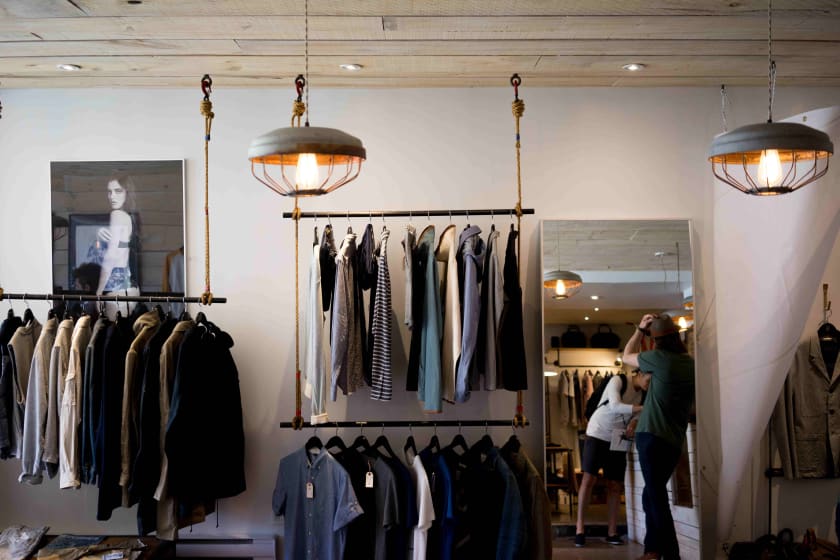10 Latest Technologies That Will Become Mainstream Soon



Summary: The fashion industry is undergoing significant changes due to the adoption of various new technologies, such as 3D printing, augmented and virtual reality, artificial intelligence, blockchain, robotics, and wearables, which can streamline operations, improve customer experience, and increase sustainability. To stay competitive in this constantly evolving industry, fashion brands need to embrace innovation and adapt to changing consumer demands, including the shift towards e-commerce and a focus on sustainability.
The need to stay up-to-date
Staying up to date with the latest trends and technologies in the fashion industry is essential for businesses looking to stay competitive. New technologies can help fashion brands streamline their operations, improve their customer experience, and stay ahead of the curve. By embracing innovation and staying on top of current events. From 3D printing and robotics to sustainability and virtual fitting rooms, these technologies are changing the way the fashion industry operates and providing new opportunities for innovation.
Below are 10 trends and technologies that can help fashion brands stay relevant and thrive in the future.
3D Printing
This technology has been around for a while, but it's only now starting to make a real impact in the fashion industry. 3D printing allows brands to quickly and easily create prototypes and small batches of products, saving time and money on traditional manufacturing methods. It also allows for greater customization and personalization of products, as fashion brands can easily create one-of-a-kind pieces using 3D printing technology.
Augmented Reality (AR) and Virtual Reality (VR)
Both AR and VR are becoming increasingly popular in the fashion industry as a way to showcase products and provide immersive shopping experiences for customers. AR allows customers to see how an item would look on them before making a purchase, while VR allows customers to step into a virtual store and try on items without ever leaving their homes. These technologies can also be used to create virtual fashion shows and other experiential events, providing a unique and engaging experience for customers.
Artificial Intelligence (AI)

AI is being used in a variety of ways in the fashion industry, from predicting consumer behavior to streamlining supply chain management. AI can analyze data from a variety of sources and make intelligent decisions, saving brands time and resources. It can also be used to create personalized recommendations for customers, helping them find the perfect products for their needs.
Blockchain
This technology has the potential to revolutionize the fashion industry by creating a more transparent and secure supply chain. Blockchain allows companies to track the production and movement of products in real time, reducing the risk of counterfeiting and improving efficiency. It also helps to increase transparency and accountability, as all parties in the supply chain can see exactly where products are coming from and how they are being produced.
Robotics
Robotics is being used in a variety of ways in the fashion industry, from automating tasks like sewing and cutting to creating custom-fit clothing. Robotics can help fashion companies save time and money, while also increasing precision and consistency. They can also help to reduce the risk of injuries in the workplace, as they can perform tasks that may be hazardous for humans.
Sustainability

The fashion industry is under increasing pressure to become more sustainable, and a variety of technologies are being developed to help meet this demand. These technologies include eco-friendly materials, circular design, and closed-loop production processes. By adopting these technologies, fashion brands can reduce their environmental impact and appeal to consumers who are increasingly looking for sustainable options.
Wearables
Wearable technology is becoming increasingly popular, and it has the potential to change the way we interact with fashion. Smartwatches, fitness trackers, and other wearables allow users to track their activity and style, and some even offer personalized fashion recommendations. These technologies can also be used to create personalized marketing campaigns, as brands can gather data on consumer preferences and use it to create targeted advertisements.
Internet of Things (IoT)
The IoT refers to the interconnected network of devices that can communicate and exchange data with each other. In the fashion industry, the IoT is being used to track inventory, manage supply chains, and even create personalized products. By connecting devices and systems, brands can gain a more complete picture of their operations and make data-driven decisions to improve efficiency and reduce waste.
Augmented Analytics
This technology uses machine learning and natural language processing to analyze data and generate insights. In the fashion industry, augmented analytics can be used to predict consumer behavior, optimize pricing strategies, and more. It can also be used to identify trends and opportunities for innovation, helping brands stay ahead of the curve.
Virtual Fitting Rooms

Virtual fitting rooms allow customers to try on clothes virtually, using a combination of AR and VR technology. This can save customers time and hassle, and it can also reduce the need for physical fitting rooms in stores. Virtual fitting rooms can also provide a more personalized shopping experience, as customers can try on a variety of different styles and sizes without ever leaving their homes. By adopting virtual fitting room technology, fashion brands can provide a convenient and personalized shopping experience for their customers, while also reducing their costs and improving efficiency.
The Way Forward
Overall, these latest technologies are changing the way the fashion industry operates and providing new opportunities for companies to innovate and stay competitive. As technology continues to evolve, fashion companies need to stay up to date on current events and consider how they can incorporate new technologies into their business models. Fashinza is already taking the necessary steps.
Key Takeaways
- Technology is playing an increasingly important role in the fashion industry, with new technologies such as 3D printing, augmented and virtual reality, artificial intelligence, blockchain, robotics, and wearables offering significant benefits to fashion brands.
- These technologies can help fashion brands streamline their operations, improve their customer experience, and stay competitive in a rapidly changing market.
- The rise of e-commerce and the growing focus on sustainability are also key trends that are shaping the fashion industry, and brands need to be proactive about adapting to these changes to stay relevant.
- To succeed in the future, fashion brands need to stay up-to-date with the latest trends and technologies and be willing to embrace innovation and adapt to changing consumer demands.



















